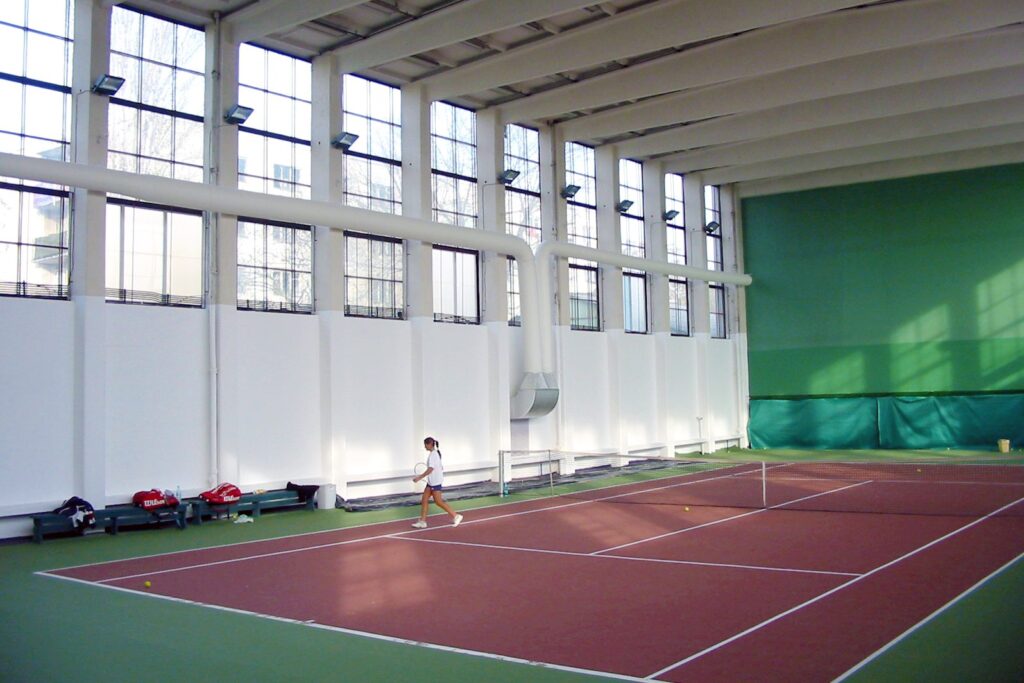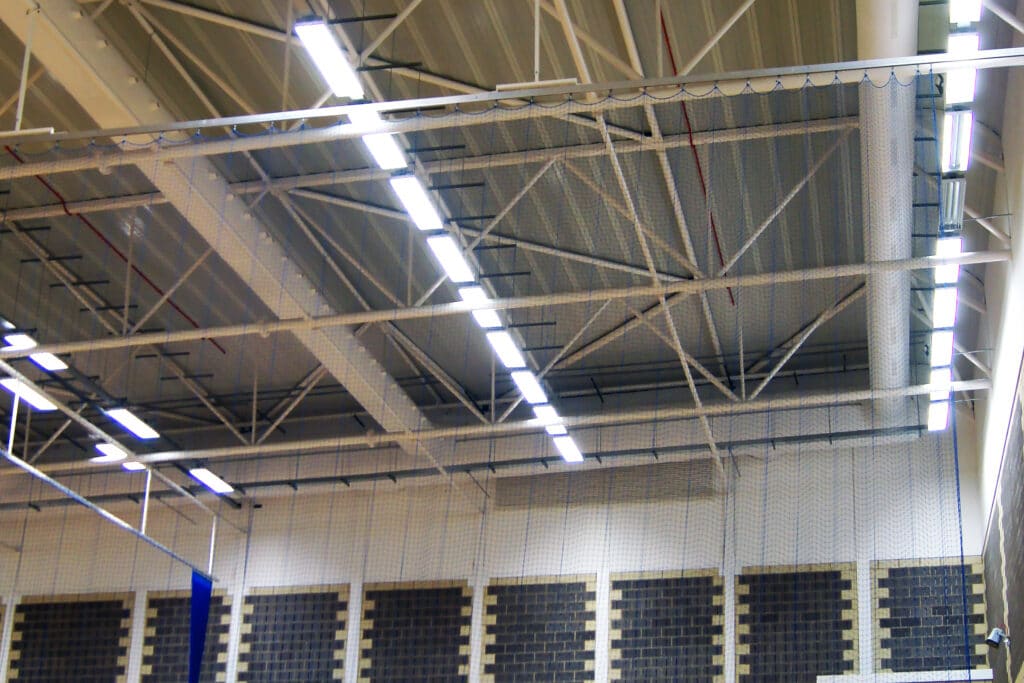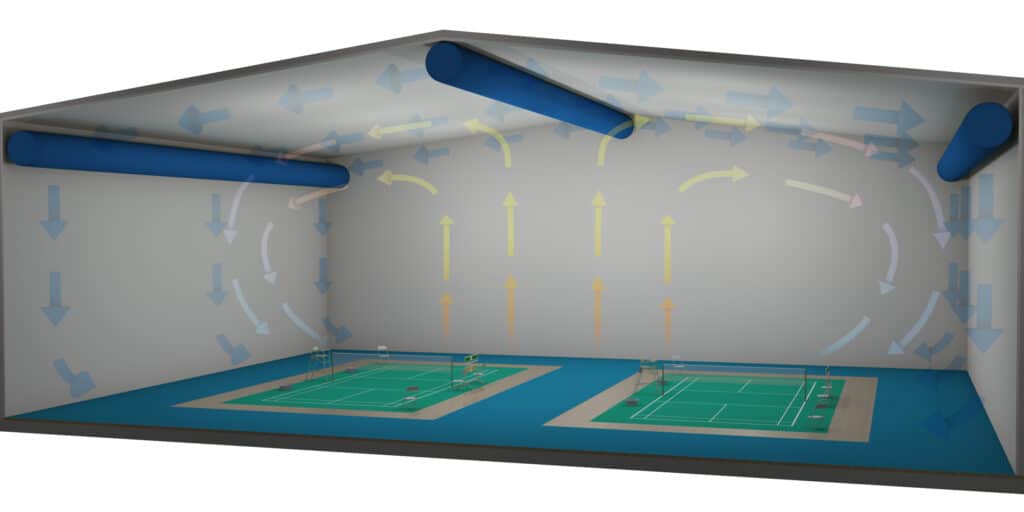Sports Hall Ventilation With Prihoda Fabric Ducts



Sports hall ventilation can be a real challenge, especially with traditional rigid ducts and diffusers. There are many practical considerations unique to sports hall ventilation.
Dimensional factors
Sports halls are large spaces with high ceilings. The supplied air tends to be very buoyant, as it is usually warmer than the surrounding air. As a result, sports halls typically require long-throw diffusers to allow the air to reach the occupied zone. However, the HVAC design must keep air velocity to a minimum to prevent disruption to certain sports, which makes the use of traditional solutions such as recirculation fans unsuitable for this application.
Mixed comfort requirements
The occupants of a sports hall are not just the members of the teams. Sports hall ventilation design must also consider spectators, referees, backups, and any other user of the hall. Active players in constant motion have different needs than seated spectators, but the ventilation system must provide a comfortable environment for everyone.
Acoustic conditions
Although many competitive sports can be noisy, building legislation stipulates noise limits for sports halls depending on where they are located. Sport England’s design guidance notes state that ambient noise levels should be low to allow easy verbal communication, adding that this is “critically important for people with hearing impairment or learning difficulties”. Similarly, the DfES’ Building Bulletin 93 sets an upper indoor ambient noise limit of 40 dB for school sports halls.
Running costs
An estimated 30% of the running costs of a typical sports centre are energy costs. Therefore, selecting an energy-efficient solution is the main driver of costs savings, a vital consideration designing for sports halls run by local authorities or schools. Installation and ongoing maintenance costs can also add up over the life of the equipment.
Other aspects to consider
Several other factors may need to be considered in some cases. If the sports hall is in a school, will it also be used as an exam hall? Also, some sports have additional requirements. For example, no one wants a badminton shuttlecock to get caught in a draught. Access for maintenance and the possibility of accidental impact are other factors that must be taken into account to achieve a successful sports hall ventilation design.
Design approach
The issues above require careful selection and system design. At Prihoda, we have designed ventilation systems for many sports halls over the last two decades. That’s why we are confident we can meet all the requirements with our fabric ducts and diffusers.
This is how we do it. We take advantage of the Coandă effect, which makes fluids stick to certain surfaces. By placing the ducts along the walls of the sports hall, we allow the supplied air to flow down the walls and into the sides of the hall, where spectators and inactive players are usually located. The Coandă effect enables us to use lower velocity diffusers than those generally used with such high ceilings. This way, the air reaches the occupied zone gently and without draughts.
In bigger sports halls, we also place one or more fabric ducts on the ceiling. They are fitted with nozzles directed horizontally at the ducts located along the walls. The air stream from the nozzles entrains some of the ambient air before mixing into the airflow from the ducts along the walls, allowing larger volumes of air to reach the occupied zone at very low velocities. Once at the occupied zone, the air can mix and flow to make up for the rising warm air generated by the occupants. The result is a highly energy-efficient, draught-free comfortable ventilation solution for sports halls of any size.

Looking for more information?
Our experts are on hand to answer any questions. Why not give us a call or drop us a message, We’ll work with you to find the right solution.
Contact us


